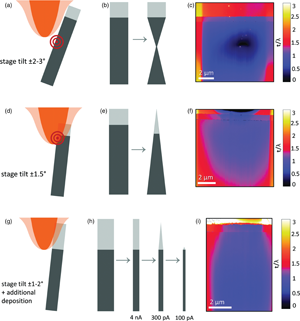Article contents
Using Xe Plasma FIB for High-Quality TEM Sample Preparation
Published online by Cambridge University Press: 15 March 2022
Abstract

A direct comparison between electron transparent transmission electron microscope (TEM) samples prepared with gallium (Ga) and xenon (Xe) focused ion beams (FIBs) is performed to determine if equivalent quality samples can be prepared with both ion species. We prepared samples using Ga FIB and Xe plasma focused ion beam (PFIB) while altering a variety of different deposition and milling parameters. The samples’ final thicknesses were evaluated using STEM-EELS t/λ data. Using the Ga FIB sample as a standard, we compared the Xe PFIB samples to the standard and to each other. We show that although the Xe PFIB sample preparation technique is quite different from the Ga FIB technique, it is possible to produce high-quality, large area TEM samples with Xe PFIB. We also describe best practices for a Xe PFIB TEM sample preparation workflow to enable consistent success for any thoughtful FIB operator. For Xe PFIB, we show that a decision must be made between the ultimate sample thickness and the size of the electron transparent region.
- Type
- Software and Instrumentation
- Information
- Copyright
- Copyright © The Author(s), 2022. Published by Cambridge University Press on behalf of the Microscopy Society of America
References
- 5
- Cited by




